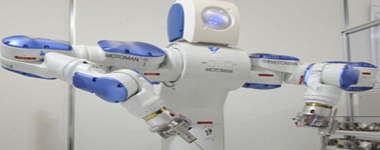from the St Louis Fed
Despite a strong labor market, some people worry that they may be put out of a job due to automation. A recent Regional Economist article delved into the likelihood of jobs being automated.

They found that 60 percent of jobs within the Eighth District could face automation in the next 20 years.1
Previous Research
Economist Sungki Hong and Senior Research Associate Hannah Shell first discussed a 2013 paper by economists Carl Benedikt Frey and Michael Osborne that examined jobs at risk of being automated. The paper’s authors found that 47 percent of U.S. jobs were at risk of being automated.
“Jobs that are repetitive or routine-intensive have the highest probability of this happening,” Hong and Shell noted.
Job Automation in the Eighth District
To examine the potential impact of automation within the Eighth Federal Reserve District, Hong and Shell combined Frey and Osborne’s probability findings with the Census Bureau’s 2017 Occupational Employment Statistics data set. The authors found that the Eighth District had a slightly higher percentage of jobs at risk of automation than the national average.
“We found that 57 percent of jobs could be automated on the national level, while 60 percent of jobs in the District have potential to be automated in the next two decades,” the authors wrote.
Where Are Jobs at Risk?
Hong and Shell further examined which metropolitan statistical areas (MSAs) in the Eighth District had the highest shares of jobs at risk. The three MSAs with the largest share of jobs facing automation were:
Conversely, the three MSAs with the smallest share facing automation were:
It should be noted that only Little Rock had a share at risk of under 58 percent, and it was 56 percent. (A figure showing shares for all Eighth District MSAs is in the article “could face automation in the next 20 years.”)











Leave A Comment